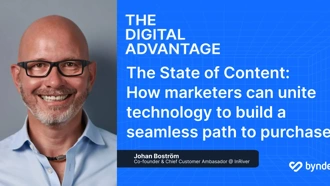Content assets are the building blocks behind any content marketing strategy. These pieces of content serve as levers to spark brand recognition and educate your audience.
Did you know that — in an average week — our customers access over 600 million assets between them using Bynder?
As a general rule, the best approach for organizations is to utilize a variety of content assets as focusing on just one type can limit your reach and engagement. The former gives organizations a better chance of engaging their audiences by appealing to their preferred learning styles and facilitating better content experiences.
In this blog, we’ll explore the types of content that are essential to content marketing, as well as how to create content assets that really convert.
What is a content asset?
In short, content assets distribute information to your audience. These resources help your organization to:
- Build brand awareness
- Enhance their credibility
- Generate more qualified leads
- Increase conversions
Content assets can be ungated or gated:
- Ungated assets are accessible at any time by your readers.
- Gated assets require customers to provide their contact information (usually a business email address or a phone number) before they can be accessed.
While gated assets may generate more qualified leads, they are best suited for mid-funnel (MOFU) prospects or bottom-of-funnel (BOFU) prospects.
8 essential types of content asset
As we’ve already alluded to, content assets can come in many forms. Let’s now look at eight essential assets that organizations will typically use as part of their content strategy.
1. Blogs
A blog is a short or long-form piece of content that’s centered around your audience’s interests or pain points.
A blog can cover a variety of topics and take several different forms, including:
- How-to guides
- Lists and round-ups
- Interviews
- Product reviews
- Company news
- Industry news and insights
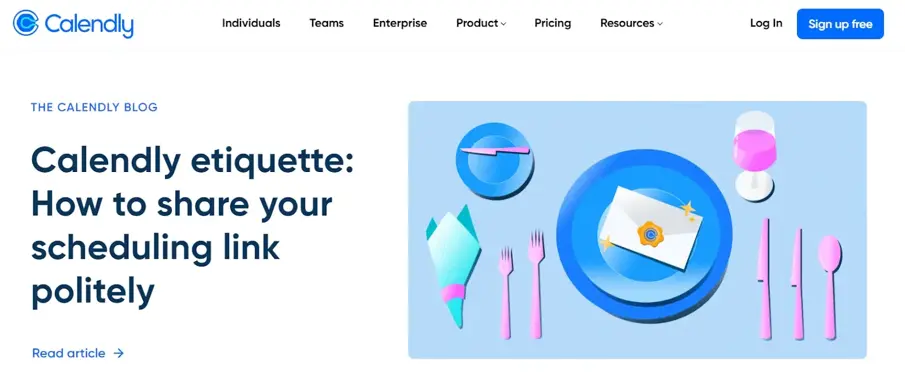
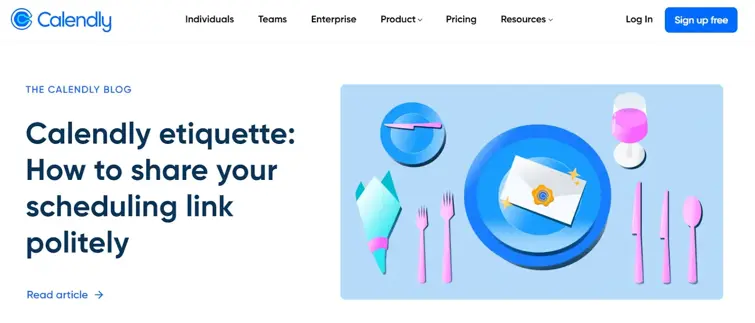
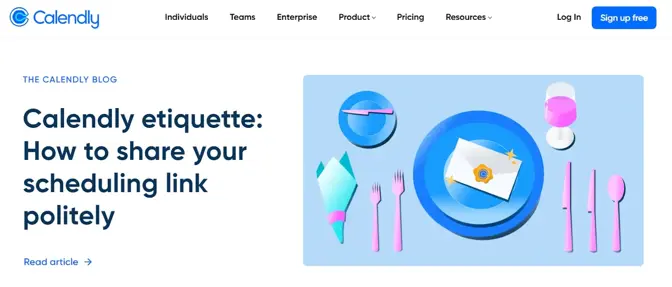
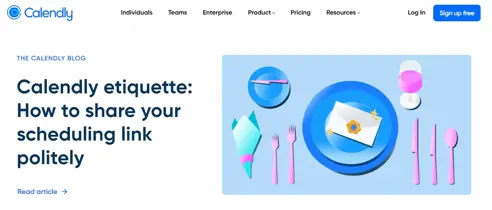
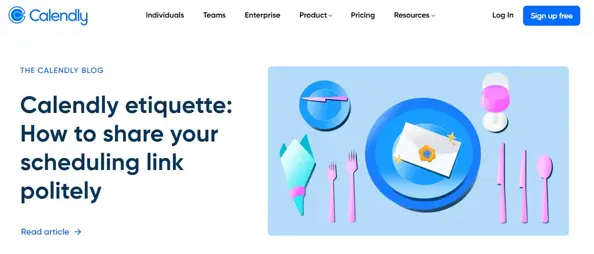 Calendly uses its blog to share tips and tricks to maximize productivity
Calendly uses its blog to share tips and tricks to maximize productivity
2. Email newsletters
An email newsletter’s purpose is usually to educate and engage customers with periodic messages. It can be an effective marketing tool for both nurturing relationships with new prospects and maintaining existing relationships with clients and customers.
Email newsletters can include content about:
- Interesting topics, themes, and opinions
- Industry analysis and marketplace developments
- The latest relevant articles or news
- Content asset promotion e.g. reports or video content
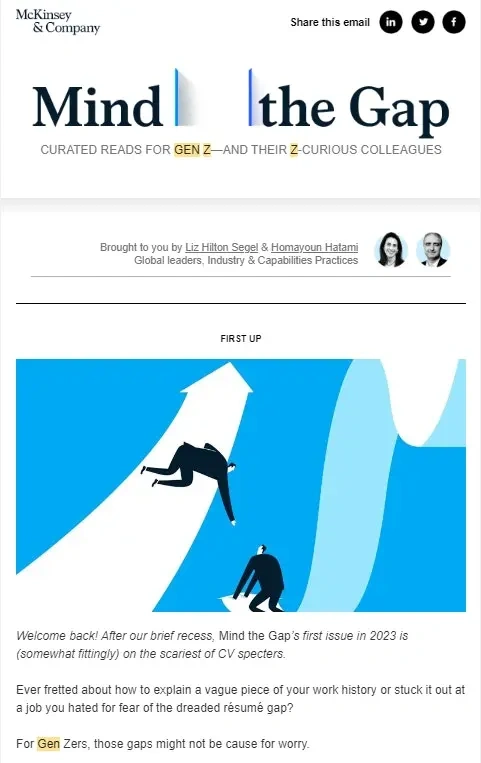 McKinsey uses its Mind the Gap email newsletter to educate customers on the work habits of Gen Z
McKinsey uses its Mind the Gap email newsletter to educate customers on the work habits of Gen Z
3. Videos
One study found that 86% of companies use video as part of their content marketing strategy, with a further 86% of marketers reporting that the use of video content helps them generate a higher number of qualified leads.
And customers appear to prefer video too. The same study found that 73% of consumers prefer to learn about a product or service by watching video content.
While YouTube remains the most popular digital platform for video, there are several other ways to use the video content format for connecting with customers, including:
- Embedding videos on your website
- Live and on-demand webinars and ‘fireside chat’ events
- Social media: LinkedIn posts, Instagram Live, TikTok, etc.
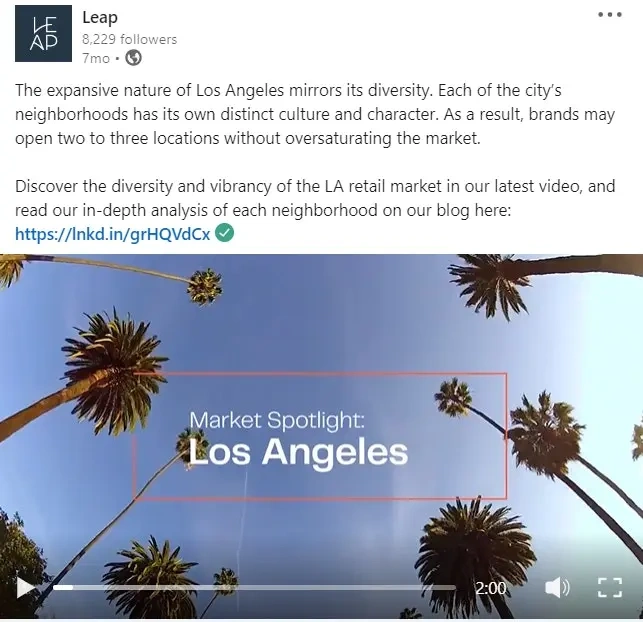 Retail-as-a-service provider Leap uses a LinkedIn video to share its Los Angeles portfolio
Retail-as-a-service provider Leap uses a LinkedIn video to share its Los Angeles portfolio
4. Templates
Templates are ready-made resources designed to make your customers’ lives easier. These assets are valuable tools that can help build brand awareness and highlight the value of your organization.
Organizations typically offer templates as a free resource, and often they are gated content assets used as ‘lead magnets’. This can include templates for:
- Checklists
- Briefs
- Roadmaps
- Calculators
- Matrices
- Spreadsheets
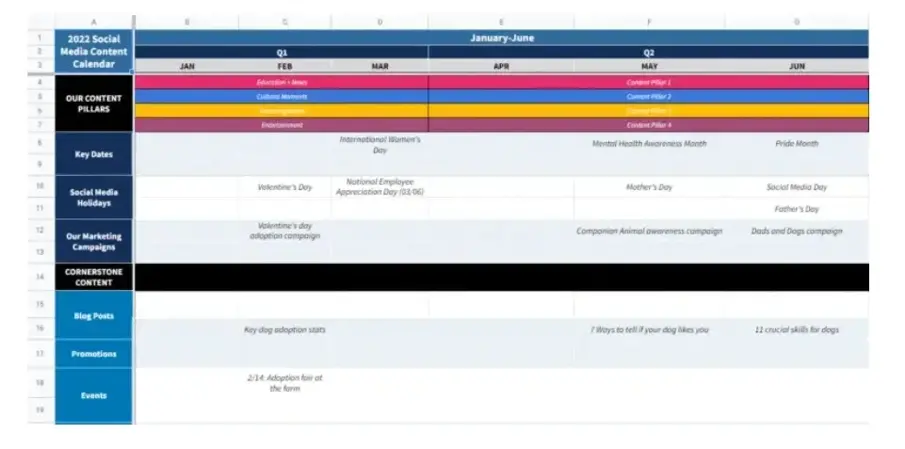
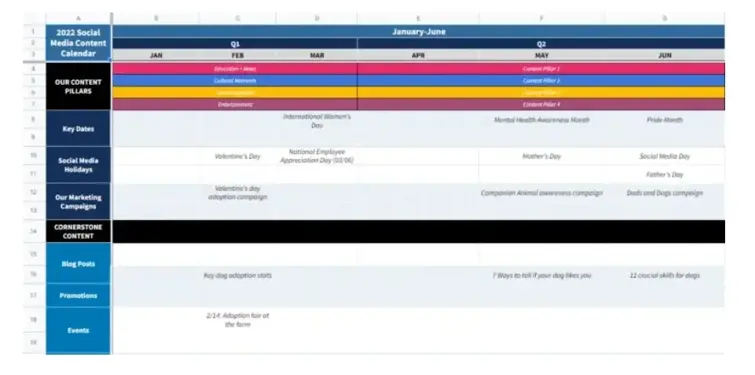
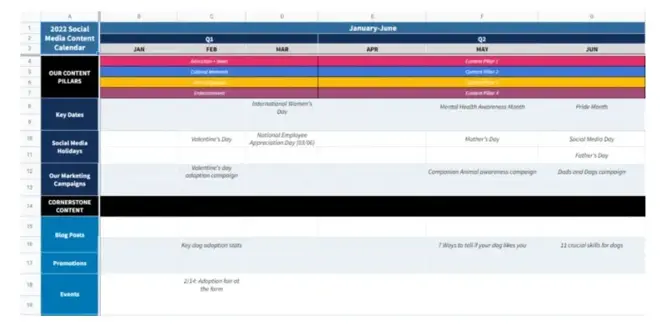
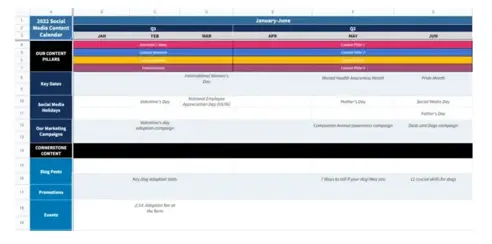
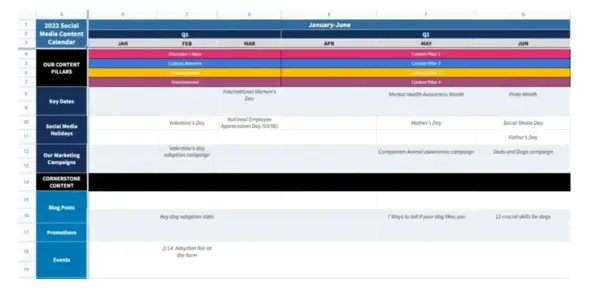 Hootsuite offer free social media templates, including this social media content calendar
Hootsuite offer free social media templates, including this social media content calendar
5. Case studies
Case studies describe how your product or service helped solve a customer’s problem. It usually includes first-hand insight from existing customers, customer quotes, and data to showcase results.
This kind of asset helps establish social proof and demonstrates the value your organization can offer their clients.
The ‘accessibility’ of case studies can vary, with some organizations choosing to gate them, and others freely displaying case studies on their website.
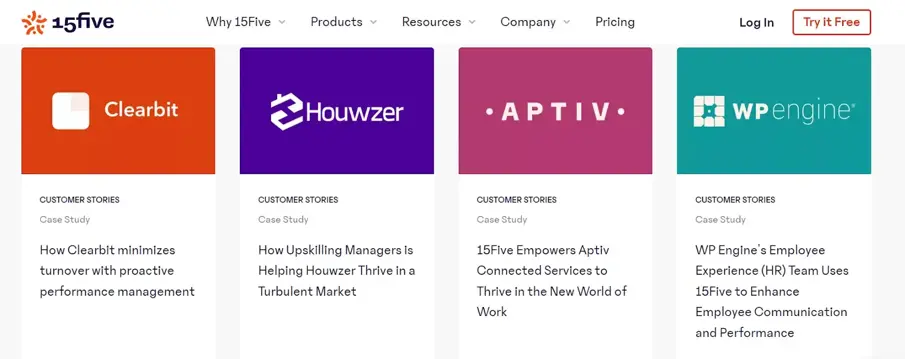
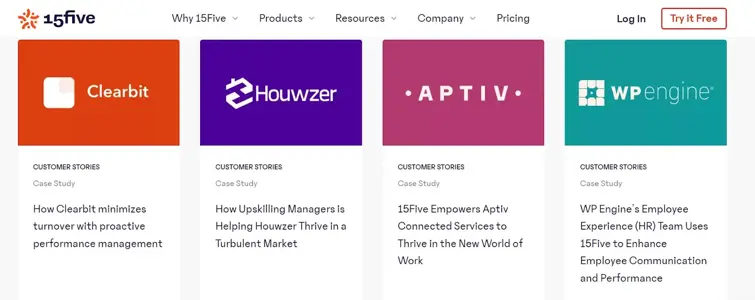
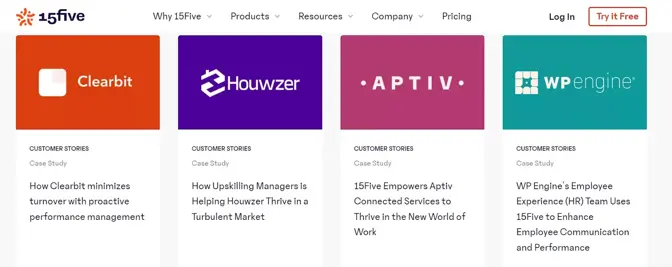
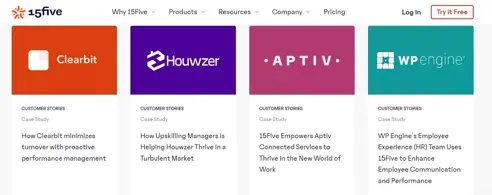
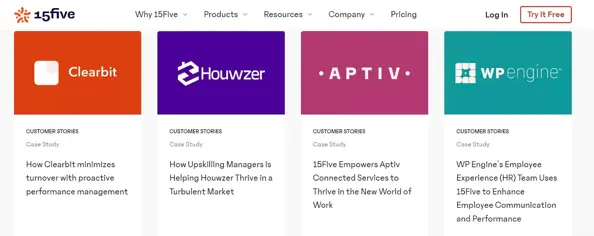 Performance management platform 15five has a page dedicated to customer stories
Performance management platform 15five has a page dedicated to customer stories
6. Ebooks
An ebook is a piece of long-form content that helps build trust and authority with the intended audience. These assets are typically over 3,000 words in length, are broken into chapters or sections, and include far more in-depth research than a blog post. Most of the time, these assets are gated.
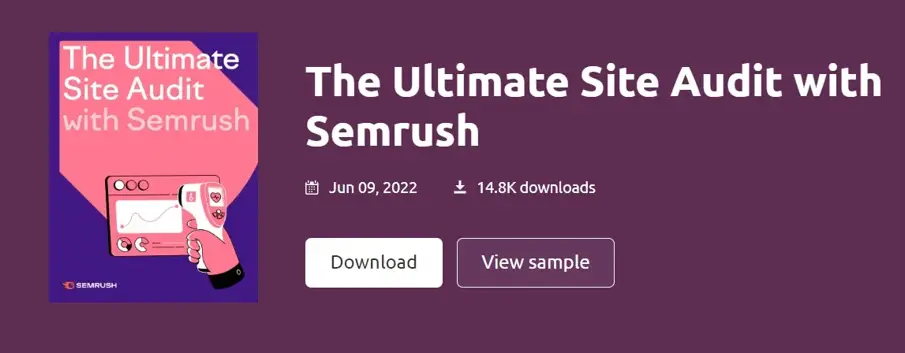
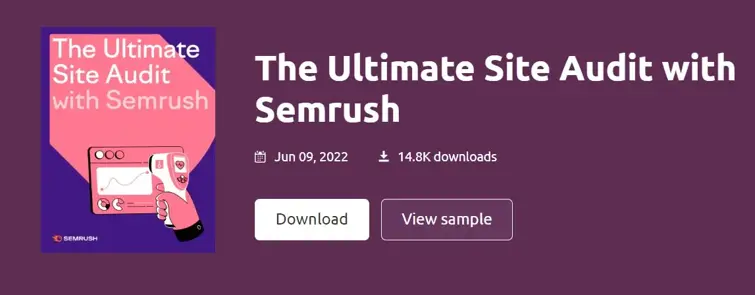
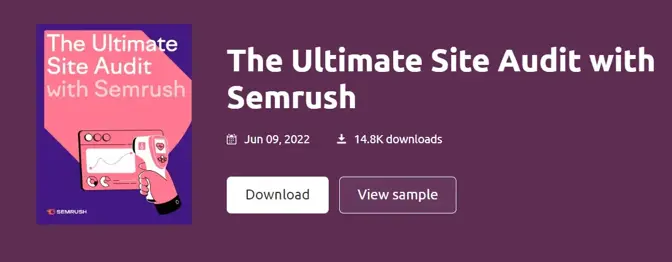
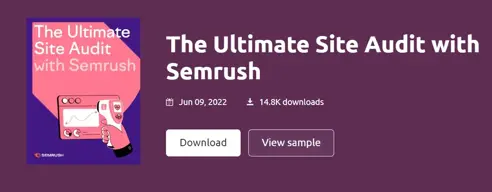
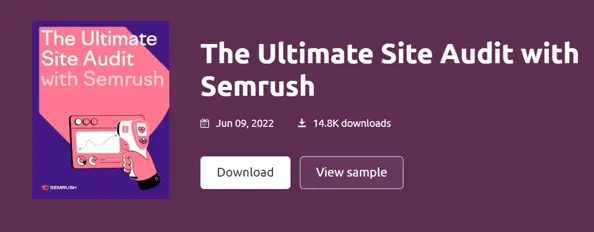 Semrush uses an ebook to educate customers on how to complete regular site audits
Semrush uses an ebook to educate customers on how to complete regular site audits
7. Reports/surveys/studies
A report or study provides original research or analyzes existing data originally. Their purpose is to foster conversation and engagement whilst also providing valuable data-driven insights to the reader.
Examples include:
- ‘State of’ industry reports
- Trend reports with industry data and findings
- Practical guides with actionable insights
- Guides that unpack a concept or theme
- Salary guides
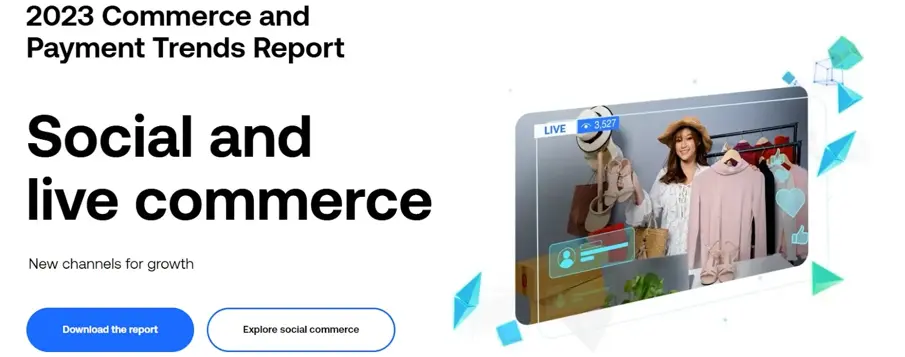
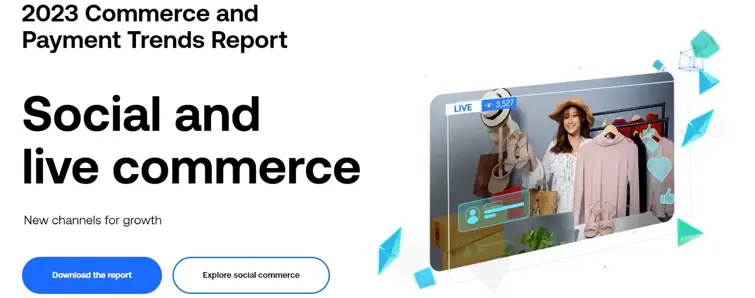
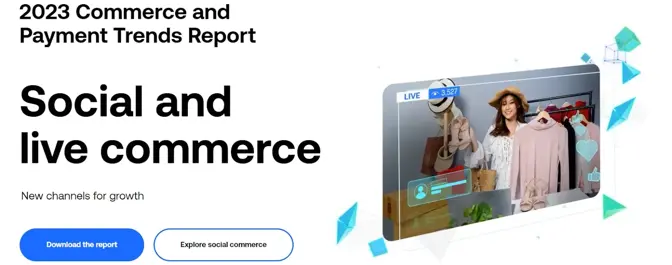
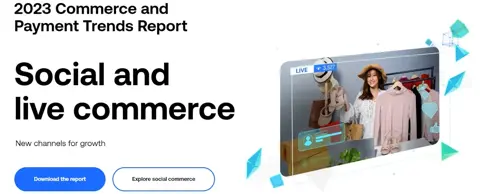
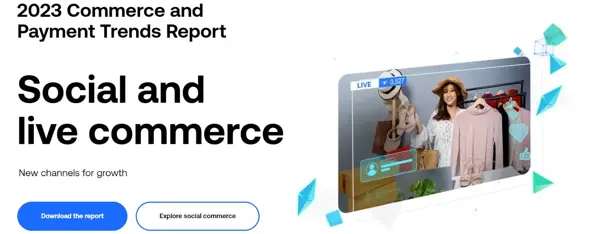 Global Payments uses its 2023 Commerce and Payments Trends Report to explore the top five trends in payment tech and how businesses can respond
Global Payments uses its 2023 Commerce and Payments Trends Report to explore the top five trends in payment tech and how businesses can respond
8. Whitepapers
A whitepaper is a long-form piece of content that includes original data, research, diagrams, quotes, and infographics, as well as insight from professional experts. They can sometimes include case studies too.
These assets are even longer than ebooks (some whitepapers can be up to fifty pages) and have a more professional — ‘almost academic’ — tone to them.
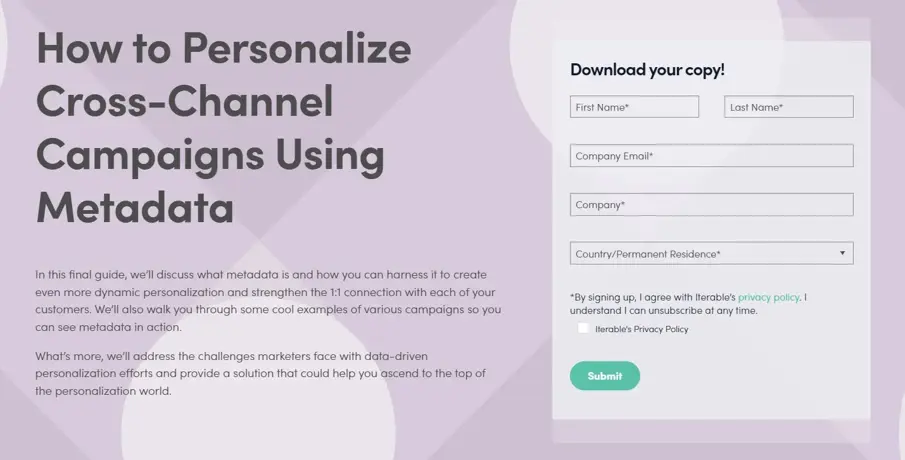
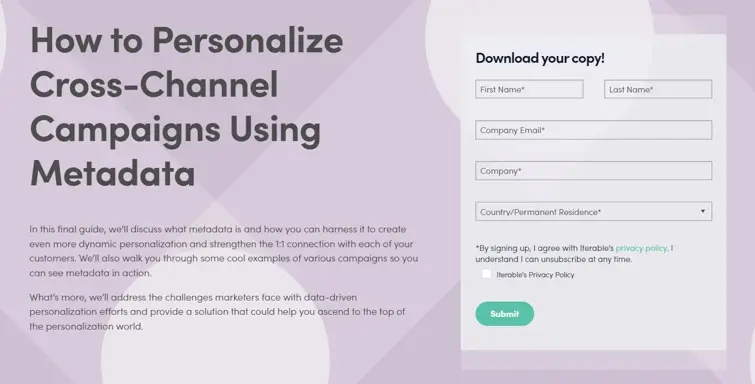
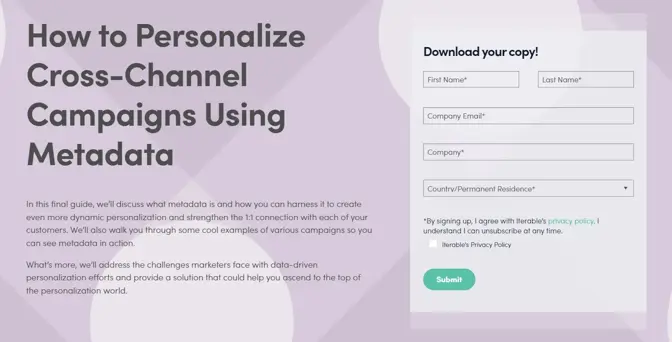
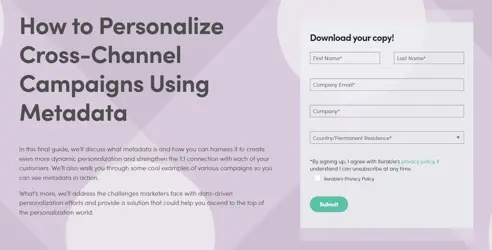
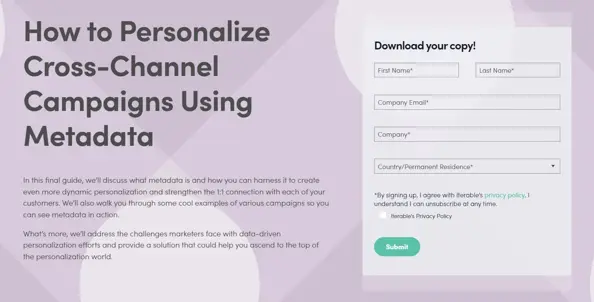 This whitepaper by Iterable explores how companies can drive personalization by using metadata
This whitepaper by Iterable explores how companies can drive personalization by using metadata
How do you create a content asset?
Creating high-quality content assets requires careful planning. The Content Marketing Institute found that organizations that are most successful with their content marketing are the very same organizations that invest in producing valuable content, featuring original topics and stories, and distributing content effectively.
Let’s take a look at how to create content assets that resonate with your audience.
1. Start with some well-defined objectives
Before diving into content creation, organizations should always determine their content goals. For example, how will you measure content success?
Defining clear objectives starts with understanding your audience. Who are your buyer personas? How can you create content that fits their needs and caters to their learning styles?
2. Focus on the right topics for your audience
While it may be tempting to focus on high-visibility keywords that will drive traffic from SEO, it’s also important to focus on the topics that will appeal most to your specific audience. You just have to take a look at industry updates like Google’s ‘helpful content update’ to see that this is true.
In this instance, the search engine giant was telling us that they aim to promote content that ‘informs audiences’ over content ‘just optimized for search engines’.
A good place to start is to look at all of your existing content and determine what has been successful. For example, If you already have a blog, newsletter, or YouTube channel, identify the topics that received the highest levels of engagement.
Next, find relevant topics by conducting keyword research. You could use a tool like Buzzsumo, SparkToro, Semrush, or Google Keyword Planner to help you uncover relevant search terms and topics most likely to generate organic traffic.
You can also look to competitor content for inspiration. How is your product or solution different from theirs? And, can you use any input or insights from your executive team to help you offer a quick perspective on a topic that’s trending right now (also known as ‘newsjacking’)?
Finally, make sure you spend time speaking to your sales and customer success teams occasionally. The insight you might gain from hearing the feedback, questions, or even ‘pushback’ they receive from customers can help inform where you put your focus when creating future content.
3. Decide which content asset types to use
Once you identify a topic, determine the best content asset type. You can decide which type is appropriate by considering the following:
- The topic:
- Will it require in-depth research?
- Would a video or ebook be a better way to present this topic?
- The organization:
- How will this topic move your business goals forward?
- Is this topic better suited as a short blog post to drive awareness?
- Can your sales team use a whitepaper around this topic to move customers further down the sales funnel?
- The audience:
- Where is your audience in the customer journey?
- For example, prospective customers at the top of the funnel may benefit from a blog post or short video.
- Alternatively, a whitepaper or ebook could be more effective for those at the bottom of the funnel.
4. Identify the resources required for content production
Before starting the writing process, determine what resources you will need. For example, consider factors like:
- Whether the piece will require interviews to be conducted to help gather insight?
- Will your team need to conduct surveys or get some original research underway?
- Will the asset need images or original graphics?
Note: The timings of your project will depend heavily on the requirements.
5. Consider how you’re going to distribute your content
Sharing your content shouldn’t be an afterthought, so before you start creating content, think through exactly how, where, and when you will publish and promote your content. At the very least, you should be identifying the distribution channels you want to employ to promote that content, as well as any important timings. This is where an editorial calendar can prove a useful tool.
Get the most out of your content assets with Content Workflow by Bynder
Content assets are valuable tools to drive your content strategy. But producing high-quality assets is easier said than done.
We know from our own experience here at Bynder that our clients turn to us to help them create more on-brand, high-quality content — consistently and at scale.
A tool like Content Workflow by Bynder can help organizations build a more consistent brand presence, and create differentiation (through content) that leads to higher loyalty levels and longer-lasting customer relationships.
Start a free trial today and see, first-hand, how Content Workflow can simplify your content creation process and maximize the value of your content assets.










